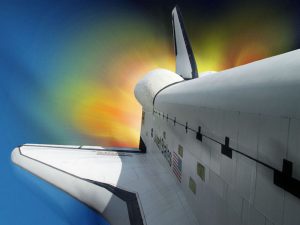Nasdax Index Composite Indicates Airline Shares
 The airline industry has long been a vital component of the global economy, serving as a bridge for both business and leisure travel. As the world’s population becomes increasingly interconnected, the importance of airlines continues to grow. For investors looking to capitalize on this growing sector, understanding the performance of airline shares listed in prominent stock market indices like the NASDAQ Index Composite is crucial. The NASDAQ Composite Index, one of the most widely followed benchmarks for U.S. stocks, includes numerous stocks from a variety of industries, including the airline sector.
The airline industry has long been a vital component of the global economy, serving as a bridge for both business and leisure travel. As the world’s population becomes increasingly interconnected, the importance of airlines continues to grow. For investors looking to capitalize on this growing sector, understanding the performance of airline shares listed in prominent stock market indices like the NASDAQ Index Composite is crucial. The NASDAQ Composite Index, one of the most widely followed benchmarks for U.S. stocks, includes numerous stocks from a variety of industries, including the airline sector.
This article delves into the significance of airline shares listed in the NASDAQ Index Composite, exploring the airlines that are included, how their stock performances impact the broader market, and why investors might want to focus on these stocks for their portfolios.
NASDAQ Index Composite
NASDAQ Composite Index is the major stock index in the United States, comprising over 3,000 publicly traded companies. Unlike other indices like the S&P 500, which primarily includes large-cap companies, the NASDAQ is known for its heavy weighting toward technology, biotech, and growth-focused companies. However, the index also includes stocks from sectors like finance, consumer goods, and, of course, airlines.
One of the defining characteristics of the NASDAQ Index Composite is its focus on innovation and technology, but this does not exclude companies from traditional industries, including airlines. The inclusion of airline stocks in the NASDAQ Composite highlights the industry’s significant role in the economy, as well as its potential for long-term growth. Airline companies in the index are often seen as a barometer of broader economic conditions and can offer valuable insights for investors interested in both the airline industry and the stock market as a whole.
Airline stocks on the NASDAQ composite
While the NASDAQ is predominantly home to technology stocks, it does include a range of companies from various industries, including airlines. Not all airlines are listed on the NASDAQ, but several prominent companies in the aviation sector are, each contributing to the index in different ways. These stocks are typically categorised by their market performance, financial health, and strategic positioning within the industry. Let us explore some of the key airline shares that are listed on the NASDAQ.
1) Alaska Air Group, Inc.
The prominent airline stock listed on the NASDAQ composite is Alaska air group. The parent company of Alaska Airlines, Horizon Air, and other regional carriers, Alaska air group operates a comprehensive network of domestic and international flights. As one of the largest carriers on the West coast of the United States, Alaska Air Group has demonstrated consistent growth and profitability.
Alaska Airlines has historically been well-regarded for its operational efficiency and commitment to customer service, which has helped it remain competitive despite the industry’s volatility. Alaska Air Group’s ability to expand through strategic acquisitions, like the merger with Virgin America, has enhanced its market share and boosted investor confidence.
2) JetBlue airways corporation
JetBlue airways, known for its low-cost business model and high-quality customer service, is another major player in the airline industry listed on the NASDAQ. JetBlue has carved out a unique niche in the airline industry by combining affordable ticket prices with amenities that appeal to both leisure and business travelers.
JetBlue has expanded significantly since its inception in 1998, and its growth trajectory continues to impress investors. The airline operates a primarily domestic network but has also expanded to international destinations in the Caribbean and Latin America. The company’s ability to maintain profitability despite fluctuating fuel prices and other challenges makes it a popular choice among investors looking for exposure to the airline sector through the NASDAQ.
3) Southwest Airlines Co.
Southwest airlines is the most well-known airlines in the United States, with a unique business model based on low-cost, no-frills air travel. Southwest’s success stems from its commitment to operational efficiency, customer satisfaction, and its ability to maintain profitability in challenging market conditions.
Though Southwest Airlines has a reputation for providing low-cost options, it has consistently delivered strong financial results. Southwest’s stock is heavily traded, and it has a large, loyal customer base. As one of the most prominent airline stocks on the NASDAQ Composite, Southwest Airlines represents stability and growth potential for investors.
Why airline stocks in the NASDAQ matter
Airline stocks in the NASDAQ composite are an important area for investors to consider because they reflect the broader economic landscape. Here’s why they matter:
1) Economic indicators
Airlines are sensitive to broader economic conditions. When the economy is growing, people tend to travel more for both business and leisure. On the other hand, in times of economic uncertainty, air travel tends to decline, affecting airline profitability. Because airline stocks in the NASDAQ composite are tied to this cyclical nature of the economy, their performance can serve as a leading indicator for broader market trends.
Investors looking at the NASDAQ composite and airline shares should be aware of these correlations. A strong performance from airline stocks may suggest improving economic conditions, while a downturn in airline stocks may indicate an economic slowdown or uncertainty.
2) Innovation and growth potential
While technology stocks dominate the NASDAQ, airlines are also innovating within their sector. For example, many airlines listed in the NASDAQ Composite are working to reduce their carbon footprint, adopt new technologies for better customer experiences, and streamline operations for cost savings. Such innovations can make these stocks appealing to investors seeking growth opportunities.
Southwest Airlines, for example, has adopted new booking technologies and expanded its route network, contributing to its growth and profitability. Similarly, JetBlue continues to improve customer service and operational efficiencies, making it an attractive long-term investment.
3) Diversification in investment portfolios
The inclusion of airline stocks in the NASDAQ composite provides a level of diversification for investors who may already have exposure to technology or biotech sectors. While technology stocks have been the focus of the NASDAQ for decades, the airline sector offers a more traditional form of growth that appeals to those looking to balance their portfolios.
Diversification within an index like the NASDAQ can help reduce risk, especially in periods of market volatility. By adding airline stocks to the mix, investors can benefit from a more diversified set of assets that react differently to economic conditions.
Impact of airline stocks on the NASDAQ index
While the NASDAQ is known for its tech-heavy focus, the inclusion of airline stocks like Alaska air group, JetBlue airways, and Southwest airlines helps to balance the index and provide a more comprehensive view of the broader economy. As these companies perform well, they can contribute positively to the index’s overall performance, providing a hedge against declines in more volatile sectors.
Airline stocks in the NASDAQ Composite are not only important for their role within the transportation industry but also because they provide investors with a means of investing in a sector that’s crucial to economic growth. Even when tech stocks might experience turbulence, airline stocks offer an alternative avenue for growth within the broader market.
Key metrics to watch for airline shares on the NASDAQ composite
When evaluating airline stocks within the NASDAQ composite, there are several key metrics and factors investors should keep an eye on to gauge the health and performance of these companies:
-
- Revenue per available seat mile: The key metrics to assess the performance of an airline is RASM, which measures the amount of revenue earned per seat mile flown. A higher RASM typically indicates better efficiency and profitability for airlines. Airlines listed in the NASDAQ Composite, such as JetBlue and Southwest, consistently report strong RASM figures, which indicate their ability to effectively generate revenue from their seat capacity.
- Load factor: Another important metric is the load factor, which refers to the percentage of available seating capacity that is filled with passengers. A high load factor generally signals effective management of capacity and strong demand for flights. Airlines with consistently high load factors are generally more efficient and have a better chance of maintaining profitability.
- Fuel costs and hedging: Fuel is the largest operational expense for airlines, and fluctuations in fuel prices can significantly impact the profitability of airline companies. Airlines listed on the NASDAQ, such as Southwest, have implemented fuel hedging strategies to mitigate the impact of volatile fuel prices. Understanding these strategies can provide insights into how well these airlines manage risks associated with fuel price swings.
- Profit margins and cost control: Airlines operate in an industry with tight margins, and managing costs is critical to staying profitable. Investors should pay close attention to profit margins, as well as how well airlines manage their operating costs, including fuel, labor, and maintenance. Companies with strong cost control mechanisms tend to perform better over the long term, especially during periods of economic uncertainty.
Understand the indicators
The airline sector plays a crucial role in the global economy, and airline shares listed in the NASDAQ composite index provide investors with a unique opportunity to gain exposure to a vital industry. While the NASDAQ is known for its tech-heavy focus, the inclusion of airline stocks like Alaska air group, JetBlue airways, and Southwest airlines highlights the diverse nature of the index and its representation of various economic sectors.
For investors looking to diversify their portfolios or gain insights into the broader economic landscape, airline stocks in the NASDAQ offer significant opportunities. Understanding the factors that affect airline stock performance, including fuel prices, economic cycles, and innovations in technology and customer service, will help investors make informed decisions. As the airline industry continues to evolve, its role in the NASDAQ Composite will remain important, offering both short-term opportunities and long-term growth potential.
By closely following the performance of these airline stocks and tracking key metrics, investors can better navigate the stock market, leveraging the opportunities presented by this dynamic and essential industry. Whether you’re an experienced investor or new to the stock market, the airline shares listed in the NASDAQ Composite provide an intriguing avenue for capitalising on the global economy’s evolving landscape.










